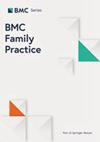Interventions targeting patients with co-occuring severe mental illness and substance use (dual diagnosis) in general practice settings – a scoping review of the literature
IF 3.2
3区 医学
Q1 MEDICINE, GENERAL & INTERNAL
引用次数: 0
Abstract
People with dual diagnosis die prematurely compared to the general population, and general practice might serve as a setting in the healthcare system to mend this gap in health inequity. However, little is known about which interventions that have been tested in this setting. To scope the literature on interventions targeting patients with dual diagnosis in a general practice setting, the outcomes used, and the findings. A scoping review of patients with dual diagnosis in general practice. From a predeveloped search string, we used PubMed (Medline), PsychInfo, and Embase to identify scientific articles on interventions. Studies were excluded if they did not evaluate an intervention, if patients were under 18 years of age, and if not published in English. Duplicates were removed and all articles were initially screened by title and abstract and subsequent fulltext were read by two authors. Conflicts were discussed within the author group. A summative synthesis of the findings was performed to present the results. Seven articles were included in the analysis. Most studies investigated integrated care models between behavioural treatment and primary care, and a single study investigated the delivery of Cognitive Behavioral treatment (CBT). Outcomes were changes in mental illness scores and substance or alcohol use, treatment utilization, and implementation of the intervention in question. No studies revealed significant outcomes for patients with dual diagnosis. Few intervention studies targeting patients with dual diagnosis exist in general practice. This calls for further investigation of the possibilities of implementing interventions targeting this patient group in general practice.针对普通诊疗环境中同时患有严重精神疾病和使用药物(双重诊断)的患者的干预措施--文献综述
与普通人相比,有双重诊断的人过早死亡,而全科医生可能是医疗系统中弥补这种健康不公平差距的一个环境。然而,人们对在这种情况下测试过的干预措施知之甚少。本研究旨在对有关针对全科医生环境中双重诊断患者的干预措施、所使用的结果以及研究结果的文献进行范围界定。对全科医生中的双重诊断患者进行范围审查。根据预先制定的搜索字符串,我们使用 PubMed (Medline)、PsychInfo 和 Embase 查找有关干预措施的科学文章。如果研究未对干预措施进行评估,如果患者未满 18 周岁,如果研究不是以英语发表,则排除在外。所有文章均通过标题和摘要进行初步筛选,随后由两位作者阅读全文。如有冲突,则在作者小组内进行讨论。对研究结果进行总结性归纳,以呈现研究结果。共有七篇文章被纳入分析。大多数研究调查了行为治疗与初级保健之间的综合护理模式,有一项研究调查了认知行为治疗(CBT)的实施情况。研究结果包括精神疾病评分和药物或酒精使用的变化、治疗利用率以及相关干预措施的实施情况。没有研究显示双重诊断患者的治疗效果显著。在普通实践中,针对双重诊断患者的干预研究很少。这就需要进一步研究在全科医生中实施针对这一患者群体的干预措施的可能性。
本文章由计算机程序翻译,如有差异,请以英文原文为准。
求助全文
约1分钟内获得全文
求助全文
来源期刊

BMC Family Practice
医学-医学:内科
CiteScore
3.20
自引率
0.00%
发文量
0
审稿时长
4-8 weeks
期刊介绍:
BMC Family Practice is an open access, peer-reviewed journal that considers articles on all aspects of primary health care research. The journal has a special focus on clinical decision making and management, continuing professional education, service utilization, needs and demand, and the organization and delivery of primary care and care in the community.
 求助内容:
求助内容: 应助结果提醒方式:
应助结果提醒方式:


